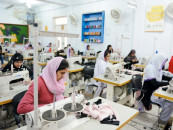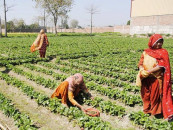Tarbela Dam turns 50
Tarbela Dam marks 50 years of supporting Pakistan's agriculture, flood mitigation, and clean energy generation

The Tarbela Dam marks its 50th anniversary this year, standing as a symbol of Pakistan's commitment to water management and clean energy. Completed in 1974, the dam has played a pivotal role in supporting agriculture, flood mitigation, and affordable hydroelectric power generation.
A press release issued Thursday highlighted Tarbela's significant contributions to Pakistan's economy. Over the last five decades, the dam has released 406 million acre-feet (MAF) of water to irrigate millions of acres of land and generated over 590 billion units of low-cost, environment-friendly electricity for the national grid. The total economic benefits accrued from the dam are estimated at $406 billion.
Located on the Indus River, 64 kilometres northwest of Islamabad, Tarbela was the world's largest earth and rock-fill dam when completed. Its power station, with 17 units, has an installed capacity of 4,888 MWover half of WAPDA's total hydropower capacity. Ongoing expansions, including the Tarbela 5th Extension Hydropower Project, will boost capacity to 6,418 MW.
Though sedimentation has reduced the dam's initial live storage capacity from 9.68 MAF to 5.77 MAF, Tarbela remains a cornerstone of Pakistan's water and power infrastructure, supporting the economy and providing sustainable energy for millions.



















COMMENTS
Comments are moderated and generally will be posted if they are on-topic and not abusive.
For more information, please see our Comments FAQ